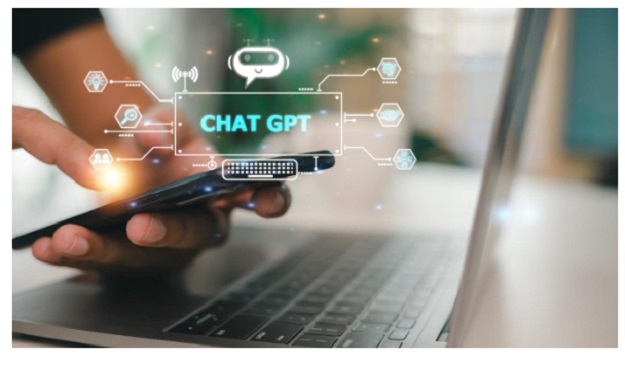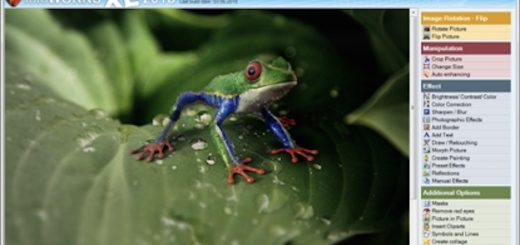Few innovations have taken the world by storm the way artificial intelligence has. While much of the hype has centered around interactive and written content, AI is capable of so much more. In just a few years, AI has evolved from a concept in science fiction to a serious factor in various industries. One of the biggest advantages of AI is its ability to generate logos and images. This technology has the potential to revolutionize numerous fields. In this article, we will discuss a few uses of AI image-generation capabilities in some fields.

The Origins of AI Imagery
In the early days of AI-generated imagery, most of the images were of very poor quality. Many critics rightly pointed out flaws in the pictures, whether intended to be realistic or artistic. However, the point of AI—the thing that separates it from other software—is its adaptability. AI tools like Image GPT are powered by machine learning algorithms and neural networks, which means they are designed to improve. The latest results show that these tools have certainly improved. In just a year or two, AI has gone from generating caricatures of real art to videos so realistic that even law enforcement find them difficult to identify.
The Technology Behind AI-Generated Logos and Images
Artificial intelligence was intended to harmonize creative processes, improve efficiency, and promote innovative solutions. Image generation is just one part of this. AI generates logos and images through a subset of machine learning. The generator produces images, while the discriminator evaluates them against real images. Over time, this process refines the generated images to become increasingly realistic and sophisticated.
Until recently, AI-generated visuals relied on generative adversarial networks, which were very limited in their capabilities. Now, AI models are trained on hundreds of millions of photos. The machine learning model scans the internet for all of those photos, as well as the text linked to them. The algorithms can find trends in the images and language and eventually begin to predict which images and texts go together. Once the model can anticipate how an image should look based on a given text, it can generate completely new graphics from scratch. These models learn patterns, styles, and design principles, enabling them to create new and unique visuals based on given inputs or parameters.
Applications Across Various Fields
Innovations in AI-generated image and logo are by no means restricted to the realm of technology enthusiasts and graphic designers. AI finds exceedingly versatile applications that extend across numerous industries. One common thread to all these fields is that they benefit from the enhanced efficiency, creativity, and personalization that AI brings.
From branding to healthcare, the ability to quickly and accurately produce tailored visuals is proving to be a massive advantage. AI is transforming how businesses and organizations operate, innovate, and engage with their audiences. Here are some of the key fields where AI-generated images and logos are making a significant impact:
Graphic Design and Branding
Of course, the most immediate and obvious application of AI-generated logos and images is in graphic design and branding. Traditionally, it takes a lot of time and effort to design a logo. Creating a brand logo is more than just cooking up a cool-looking picture for a band. A brand logo is a visual identity, and it requires significant time and expertise from designers.
How did AI help designers here? It makes it easy to come up with multiple options in a short period of time. Thus, AI can streamline and accelerate the preliminary design process by generating multiple logo options. All the AI tools will need is information on client preferences. The very best tools can create designs that are at or nearly at industry standards and follow the latest design trends. In addition to speeding up the design process, AI tools make high-quality design accessible to small businesses and start-ups with limited budgets.
Marketing and Advertising
In marketing and advertising, visuals are everything. Key metrics for success include effectiveness at capturing audience attention and conveying a message effectively. With AI, marketers can generate tailored images for campaigns, social media posts, and advertisements. All the software needs are prompts that align with brand aesthetics and campaign objectives. AI tools also have the ability to analyze consumer data and preferences. This data can be applied to create personalized visuals. The benefit? Ads that resonate more deeply with target audiences have better engagement and conversion rates.
E-Commerce and Retail
In these closely related aspects of business, visual quality greatly influences many customers’ purchasing decisions. We have already established that AI can generate high-quality product images, but the capabilities of some tools go well beyond that. These ever-more immersive features include creating variations in colour, angles, and settings. Marketers can play around with these features to provide customers with a comprehensive view of products.
This is particularly useful for businesses with extensive catalogues of products. On one hand, AI images reduce the need for costly and time-consuming photo shoots. Additionally, AI-generated models and virtual try-ons enhance the online shopping experience. The user interface and experience are more interactive and appealing.
Entertainment and Media
These industries already benefit greatly from AI-generated images. For instance, in film and video game production, AI creates realistic backgrounds, characters, and scenes. These features are quite welcome because they reduce the workload on artists and animators. This technology can also be used to restore and improve old movies or to create entirely new visual content for storytelling purposes. In journalism, AI can generate compelling visuals to accompany articles.
Education and E-Learning
Perhaps the most underrated application for image generation in AI is in the field of learning. In education and e-learning, AI-generated images can be used to create engaging and illustrative content. This content finds applications in textbooks, online courses, and educational materials. Of course, visual aids are essential for effective learning, and AI can produce customized diagrams, infographics, and interactive visuals. It makes it easier to create various visuals that cater to diverse learning styles. This can reduce the cost of education, which means it becomes more accessible and enjoyable. These benefits are particularly beneficial for subjects that require complex visual explanations, such as science and mathematics.
Healthcare and Medical Imaging
AI-generated images are already proving to be quite valuable in healthcare, particularly in medical imaging. AI can enhance the quality of medical scans and generate synthetic images for training and research purposes. Already, there are early adopters of systems that can assist in diagnosing conditions by highlighting anomalies in scans. This application not only improves diagnostic accuracy but also aids in the training of medical professionals by providing a vast array of visual examples.
Ethical Considerations
While the potential of AI for generating logos and images is vast, it also raises important ethical considerations. These include:
The authenticity of AI-generated images.
The potential for misuse in creating deep fakes.
The impact on human jobs in creative fields.
Of course, these are all valid and significant concerns. Ensuring transparency in AI-generated content and developing guidelines to prevent misuse are essential steps in addressing these challenges.
Looking Ahead to Future Innovations
As far as the direction of future developments in this field, the possibilities are innumerable. For certain, the integration of AI with Augmented Reality and Virtual Reality will definitely expand its applications. AI-generated visuals could be used in immersive experiences in many fields. These include virtual tours and interactive simulations, opening up new possibilities for entertainment, education, and beyond.
AI’s ability to generate logos and images is transforming various fields by making creative processes more efficient and accessible. As with all technology, these tools continue to evolve. No matter what direction these innovations follow, they will undoubtedly unlock even more innovative applications. AI will continue reshaping the landscape of design, marketing, healthcare, and beyond. The key will be to navigate the ethical implications responsibly while embracing the opportunities AI offers.




